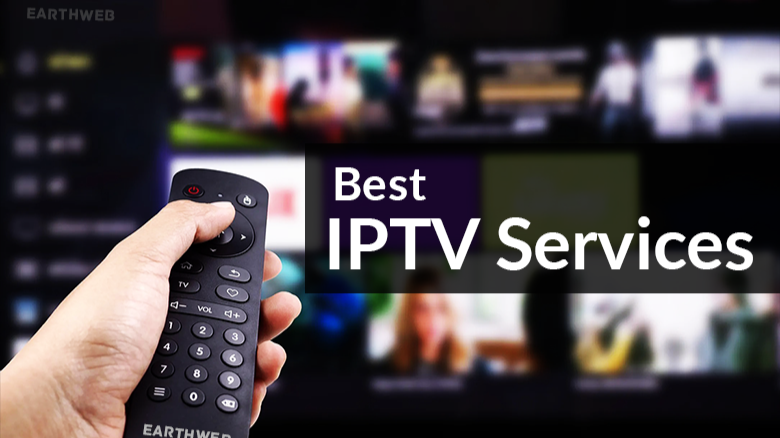Introduction
In a world where digital entertainment is rapidly evolving, IPTV (Internet Protocol Television) has emerged as a game-changer, offering a more flexible and affordable way to watch television. IPTV allows users to stream live TV channels, movies, and series over the internet, bypassing traditional cable or satellite services. But if you’re new to the concept, you may be wondering how to get IPTV and where to begin.
This guide will walk you through everything you need to know about IPTV—what it is, how it works, the different types of IPTV services, and most importantly, how to get IPTV up and running on your device. Whether you’re a tech enthusiast or someone looking for a better TV experience, this post will provide a step-by-step guide to help you make an informed choice.
By the end of this article, you’ll be equipped with all the knowledge needed to access IPTV, enjoy premium content, and perhaps even cut the cord on traditional cable services.
What is IPTV?
Before diving into how to get IPTV, it’s essential to understand what IPTV is. IPTV stands for Internet Protocol Television, which means that TV programming is delivered via the internet rather than through traditional broadcast or cable formats. Unlike conventional TV services that require a cable or satellite signal, IPTV uses your internet connection to stream content.
There are three main types of IPTV services:
- Live IPTV: Streams live television channels.
- Time-shifted IPTV: Lets you watch TV shows and movies after they’ve aired (like a DVR function).
- VOD (Video on Demand) IPTV: Offers access to a library of on-demand content, including movies, series, and documentaries.
Why Choose IPTV Over Traditional TV Services?
Cost Efficiency
One of the primary reasons people are switching to IPTV is the cost. Traditional cable TV packages often come with high monthly fees, whereas IPTV services tend to be more affordable, offering flexible subscription plans that fit a variety of budgets.
Global Access
With IPTV, you can access television content from around the world. Whether you’re a sports fan looking to watch international leagues or someone interested in foreign films, IPTV opens the doors to global content that you wouldn’t typically get through local cable providers.
Customizable Content
IPTV services are highly customizable, allowing you to pick and choose the content you want to pay for. This is particularly useful for people who only want specific channels or content types, eliminating the need for bloated cable packages filled with unwanted channels.
How to Get IPTV: Step-by-Step Guide
Now that you know what IPTV is and why it’s a popular choice, let’s move on to the main topic: how to get IPTV. Below is a comprehensive, step-by-step guide to help you set up IPTV and start enjoying your favorite shows and channels.
Step 1: Choose an IPTV Service Provider
The first step in getting IPTV is to choose a reliable IPTV service provider. Many providers offer IPTV services, each with its pros and cons, so it’s essential to do your research. Here are a few key things to look for:
- Channel Lineup: Ensure the provider offers the channels you want to watch, including live TV, sports, and on-demand content.
- Service Quality: Look for user reviews on the reliability and streaming quality of the service.
- Subscription Plans: Check for flexible subscription options and pricing that fits your budget.
- Device Compatibility: Ensure that the provider supports the devices you plan to use (smart TV, smartphone, tablet, PC, etc.).
Popular IPTV Providers:
- Hulu with Live TV
- YouTube TV
- Sling TV
- Philo TV
- Tivimate (for custom IPTV playlists)
Step 2: Check Your Internet Speed
IPTV relies heavily on your internet connection to stream content. Before you sign up for a service, make sure your internet connection is fast enough to support it. Ideally, you’ll want a connection speed of at least 10 Mbps for standard definition (SD) streaming and 25 Mbps for high definition (HD) streaming.
You can use an internet speed testing tool to check your current speed.
Step 3: Choose Your Device
IPTV can be accessed on a variety of devices, so the next step is to decide which device you’ll be using. Some popular choices include:
- Smart TVs: Many smart TVs have built-in apps that support IPTV services.
- Streaming Devices: Devices like Amazon Fire Stick, Roku, and Google Chromecast can run IPTV Apps..
- Smartphones/Tablets: Both Android and iOS devices support IPTV apps.
- Computers: Windows and Mac computers can stream IPTV content through web browsers or dedicated apps.
Step 4: Install an IPTV App
After you’ve chosen a device, you’ll need to install an IPTV app. Some IPTV services come with their own apps, but you can also find third-party apps that allow you to add your own IPTV subscription or playlist.
Popular IPTV apps include:
- Tivimate
- IPTV Smarters Pro
- GSE Smart IPTV
- Kodi
Download the app onto your device and prepare for the next step.
Step 5: Subscribe to an IPTV Service
Once you’ve installed your IPTV app, the next step is to subscribe to an IPTV service. Many providers offer free trials, so you can test out the service before committing to a full subscription.
Once you’ve signed up, you’ll likely receive an M3U playlist URL or login credentials, depending on the IPTV service you’ve chosen.
Step 6: Input the Playlist or Credentials
After subscribing to your chosen IPTV service, you’ll need to input the M3U playlist URL or login credentials into the IPTV app. This will give you access to all the channels and content included in your subscription.
Each app has a slightly different setup process, but generally, you’ll find an option to input your iptv premium provider’s information under the app’s settings.
Legal Considerations: Is IPTV Legal?
The legality of IPTV services can be a gray area. Some IPTV services are entirely legal and offer legitimate access to TV channels and on-demand content. However, there are many illegal IPTV services that stream pirated content without permission from the content creators or rights holders.
To stay on the right side of the law, it’s crucial to choose a legitimate IPTV provider that has proper licensing for the content they offer.
Factors to Consider When Getting IPTV
When learning how to get IPTV, it’s essential to consider several factors to ensure you get the best experience.
1. Content Availability
Does the IPTV provider offer the content you want? Some services focus heavily on sports, while others are more general.
2. Service Reliability
The last thing you want is buffering in the middle of your favorite show or a live sports event. Make sure the service provider has good uptime and server reliability.
3. Compatibility
Make sure the service is compatible with your preferred devices and offers apps for platforms like Android, iOS, and smart TVs.
4. Customer Support
Check whether the service provider offers reliable customer support in case you run into technical issues or have questions about your service.
5. Pricing
IPTV services vary in pricing, with some offering pay-as-you-go options, while others lock you into monthly or yearly contracts. Choose a plan that suits your budget.
Common Issues and Troubleshooting Tips
Once you have IPTV up and running, there are some common issues you might encounter, such as buffering or connection errors. Here are a few troubleshooting tips:
- Buffering: Ensure your internet connection meets the minimum requirements, and try restarting your router or the IPTV app.
- No Sound or Video: Check if your device’s firmware is up to date, and make sure the app has permission to access your device’s sound or video settings.
- Login Issues: Double-check your login credentials, or contact customer support for assistance.
Conclusion
In today’s digital age, IPTV offers a more flexible, affordable, and customizable way to watch your favorite TV shows, movies, and live events. By following this guide on how to get IPTV, you can easily choose a provider, set up your service, and start enjoying premium content on a variety of devices.
Whether you’re looking to save money or access global content, IPTV is an excellent alternative to traditional cable and satellite TV. Take the plunge, and you might never go back to conventional TV services.
Call to Action
Ready to make the switch to IPTV? Start by choosing a provider that meets your needs, and explore a world of endless entertainment today. Don’t wait—get IPTV and transform your viewing experience!


